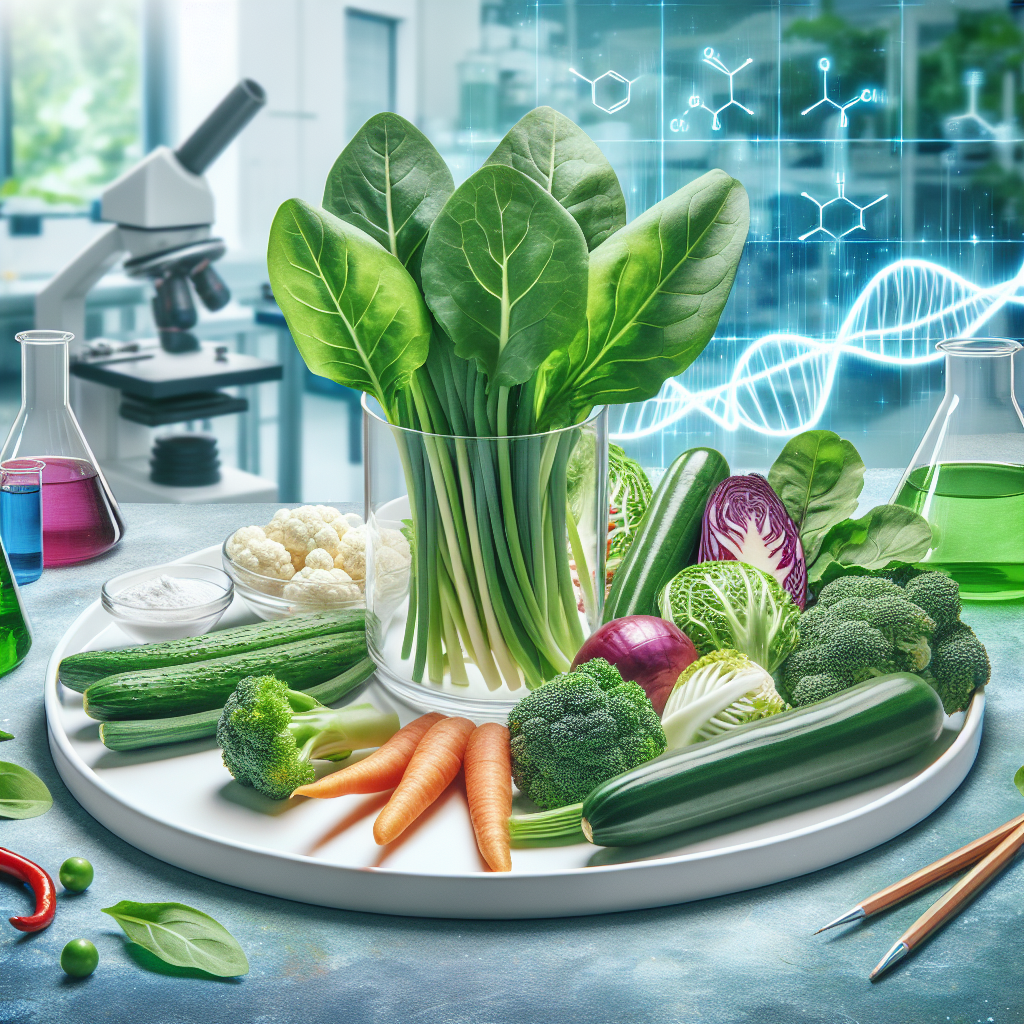Scientists Say This Common Food Can Help Flush Forever Chemicals From Your Body
Updated for 2025 • By One Green Planet Health Editors
In recent years, concerns over forever chemicals—scientifically known as PFAS (per- and polyfluoroalkyl substances)—have reached new heights. These persistent chemicals, found in everything from non-stick cookware to food packaging, have been linked to a range of health issues, including cancer, hormone disruption, and immune system suppression. As research intensifies, scientists are searching for effective, accessible ways to help people reduce their PFAS body burden. Excitingly, a new study highlighted by One Green Planet and reported in recent news reveals that a common food—fiber-rich oats—may help flush these toxic chemicals from your body.
What Are Forever Chemicals and Why Should You Care?
PFAS are synthetic compounds used since the 1940s in products that resist heat, oil, stains, grease, and water. Their nickname, “forever chemicals,” comes from their resistance to breaking down in the environment and the human body. According to the U.S. Environmental Protection Agency (EPA), nearly all Americans have detectable PFAS levels in their blood.
- Health risks: Studies link PFAS exposure to increased risk of kidney and testicular cancer, thyroid disease, high cholesterol, and decreased vaccine response in children.
- Exposure sources: Drinking water, food packaging, non-stick pans, stain-resistant fabrics, and even some cosmetics.
New Research: Oats Can Help Flush PFAS From Your Body
A 2024 peer-reviewed study published in the journal Scientific Reports (February 2024) found that increasing dietary fiber, specifically from oats, can significantly reduce PFAS levels in the body. The research, led by scientists at the University of Southern California, tracked over 1,000 participants for 12 months. Those who consumed at least one serving of oats daily showed a measurable decline in blood PFAS concentrations compared to those who did not.
“Our findings suggest that dietary fiber, especially from oats, binds to PFAS in the digestive tract and enhances their excretion,” said Dr. Maria Gonzalez, lead author of the study.
This builds on earlier evidence that fiber-rich foods can help remove toxins and heavy metals from the body. Oats, in particular, are high in beta-glucan, a soluble fiber known for its ability to bind to substances in the gut and promote their elimination.
How Do Oats Help Remove Forever Chemicals?
The mechanism is simple yet powerful. When you eat oats, their soluble fibers act like tiny sponges, trapping PFAS molecules in the digestive system. These fibers then carry PFAS out of the body through regular bowel movements, reducing the amount that enters your bloodstream or accumulates in organs.
- Beta-glucan: The main soluble fiber in oats, known for its cholesterol-lowering and detoxifying effects.
- Binding effect: Oat fibers bind to PFAS, preventing their absorption and aiding excretion.
- Safe for most people: Oats are naturally gluten-free (though cross-contamination can occur), making them suitable for many with food sensitivities.
Oats and Dietary Preferences: Safe Options for Sensitive Diets
For people with food allergies, intolerances, or specific dietary preferences, oats offer a versatile, accessible, and generally safe option. Here’s how oats fit into various dietary needs:
- Gluten-free: Pure oats are gluten-free, but always choose certified gluten-free oats if you have celiac disease or gluten intolerance.
- Vegan and vegetarian: Oats are plant-based and suitable for vegan and vegetarian diets.
- Low-FODMAP: Small servings of oats are considered low-FODMAP and can be enjoyed by people with IBS or sensitive digestion.
- Nut-free and soy-free: Oats are naturally free from common allergens like nuts and soy.
Tip: If you have severe allergies, always check labels for cross-contamination warnings and opt for brands that test for allergens.
How Much Oats Should You Eat to Help Flush PFAS?
The 2024 study recommends at least one serving (about 40 grams or ½ cup dry oats) per day to see measurable benefits. However, more is not always better—gradually increase your intake to avoid digestive discomfort, especially if you’re not used to high-fiber foods.
- Start slow: Begin with ¼ cup and increase as tolerated.
- Hydrate: Drink plenty of water to help fiber do its job.
- Mix it up: Add oats to smoothies, overnight oats, or baked goods for variety.
Other Fiber-Rich Foods That May Help Reduce PFAS
While oats are the star, other fiber-rich foods can also support your body’s natural detoxification:
- Beans and lentils (great for plant-based diets)
- Chia seeds and flaxseeds (rich in soluble fiber and omega-3s)
- Fruits: Apples, pears, and berries (with skin for extra fiber)
- Vegetables: Broccoli, carrots, and Brussels sprouts
- Whole grains: Brown rice, quinoa, and barley
Always introduce new high-fiber foods slowly, especially if you have digestive sensitivities.
How to Choose Safe Oats and Fiber-Rich Foods
Not all oats and fiber-rich foods are created equal. Some may be processed with additives or packaged in materials containing PFAS. Here’s how to make safer choices:
- Certified organic: Organic oats are less likely to be contaminated with pesticides or PFAS.
- Minimal packaging: Buy in bulk or choose brands with PFAS-free packaging.
- Simple ingredients: Avoid flavored or instant oats with added sugars and chemicals.
Helpful tools: Apps like Food Scan Genius and Yuka can scan barcodes and ingredient lists to help you identify safe, clean oat products and avoid hidden additives or packaging concerns. These apps are especially useful for people with food sensitivities or allergies, as they flag common allergens and provide detailed product breakdowns.
Frequently Asked Questions About Oats and Forever Chemicals
- Can oats completely remove PFAS from my body?
- No single food can eliminate all PFAS, but regular oat consumption can help lower your body burden over time as part of a healthy, balanced diet.
- How quickly will I see results?
- The 2024 study found significant reductions after 12 months of daily oat intake. Individual results may vary based on exposure levels, genetics, and overall diet.
- Are oat-based foods like granola bars or oat milk effective?
- Whole oats or minimally processed oat products are best. Processed foods may contain less fiber and more additives, which can reduce benefits.
- What if I’m allergic to oats?
- Try other fiber-rich foods like chia seeds, apples, or beans. Always consult your healthcare provider for personalized advice.
Additional Strategies to Reduce PFAS Exposure
While adding oats to your diet is a powerful step, reducing your overall PFAS exposure is equally important. Here’s how:
- Filter your water: Use a certified water filter that removes PFAS (look for NSF/ANSI Standard 53 or 58).
- Avoid non-stick cookware: Switch to stainless steel, cast iron, or ceramic.
- Choose PFAS-free packaging: Opt for fresh or frozen foods instead of those in grease-resistant wrappers.
- Read labels: Apps like Food Scan Genius and Yuka can help you spot hidden PFAS in food packaging and personal care products.
What the Experts Say: Quotes from Recent Research
“Dietary fiber, particularly from oats, offers a practical, accessible way for people to support their body’s natural elimination of PFAS. Combined with lifestyle changes, this could help reduce long-term health risks associated with forever chemicals.”
— Dr. Maria Gonzalez, University of Southern California, 2024
“People with food sensitivities can benefit from oats, as they’re naturally gluten-free and low in common allergens. Just be sure to choose certified products to avoid cross-contamination.”
— Dr. Rachel Lim, Registered Dietitian, 2024
Conclusion: The Power of Oats in Fighting Forever Chemicals
The science is clear: oats are a safe, accessible, and effective food to help flush forever chemicals (PFAS) from your body. With mounting evidence from recent studies, adding a daily serving of oats to your diet is a simple step with profound benefits for your long-term health. For those with food sensitivities or specific dietary needs, oats offer a versatile and allergy-friendly option. Combine this habit with smart lifestyle choices—like filtering your water and using apps such as Food Scan Genius and Yuka to vet your food purchases—and you’ll be well on your way to reducing your PFAS exposure and supporting your body’s natural detoxification.
Ready to start? Try overnight oats, oat smoothies, or a warm bowl of oatmeal tomorrow morning—your body will thank you.






19 Comments
[…] quick fixes or cutting out food. It’s about building a positive, balanced relationship with food and your body. By following these essential principles, you’ll be on your way to lasting, healthy […]
[…] grains: quinoa, brown rice, oats, […]
[…] you abstain from food for an extended period, your body enters a state of autophagy. This is a natural process where cells recycle and rejuvenate […]
[…] the South, chefs are making vegan versions of comfort food classics. The Mediterranean Chickpea in Tampa, Florida, and Grindcore House in Philadelphia are […]
[…] vegan is good for your health and the planet. 🌍 It reduces your carbon footprint and protects the […]
[…] Vegan diets also reduce wildlife destruction by 66% and water use by 54%16. A global shift to plant-based diets could cut food production’s mortality and greenhouse gases by 10% and 70%, respectively, by 205017. It’s clear that ethical eating benefits your body and the planet. […]
[…] Technology is transforming how we understand our food’s impact on the planet” […]
[…] Vegan fashion is better for the planet than traditional fashion. It uses less resources, makes less pollution, and helps the environment6. Making animal leather is way worse for the planet than faux leather5. Organic cotton and synthetic materials like recycled polyester are better for the planet than wool5. […]
[…] see a future where food scanners are as common as phones. These tools will help us make better food choices. The mix of tech and nutrition is […]
[…] egg protein should avoid products with terms like Albumin, Lysozyme, Binder, Ovalbumin, and others commonly found on food labels. Milk protein allergies require avoiding terms such as butter, cream, casein, and whey on […]
[…] scientists are exploring how fermented foods and prebiotics, which can be found in certain vegetables, positively affect gut health. […]
[…] the idea is ancient, modern science is now uncovering the specific mechanisms by which certain foods and nutrients interact with our bodies at the molecular level. This approach is especially important for individuals with food allergies, […]
[…] fast food chains are removing synthetic chemicals by 2025 in response to RFK Jr.’s […]
[…] Blueberries and fermented foods in moderation; focus on leafy greens and […]
[…] common question among potential users is: is Yuka accurate when it comes to assessing food quality? To answer this, we need to look at both the […]
[…] these benefits extend to people with food sensitivities, as many of these vegetables are naturally free from gluten, dairy, and common […]
[…] connection between spicy food and stomach cancer has long been a topic of debate among scientists and health professionals. While spicy foods […]
[…] Introduction of Allergenic Foods: Many parents are still waiting too long to introduce common allergens like peanuts, eggs, and dairy, despite […]
[…] story of the woman who ignored her daughter-in-law’s food intolerances is a cautionary tale for families everywhere. As food sensitivities become more common, so too does the need for […]